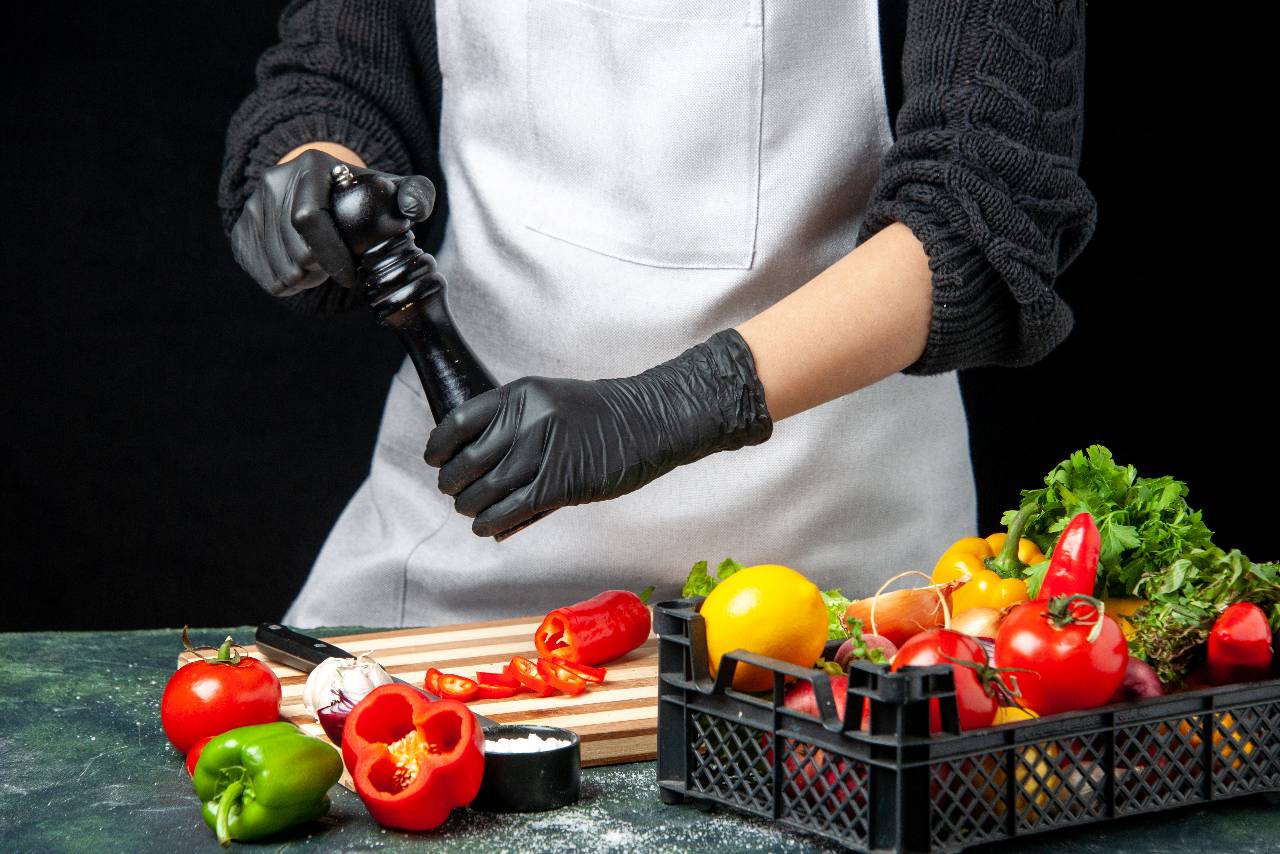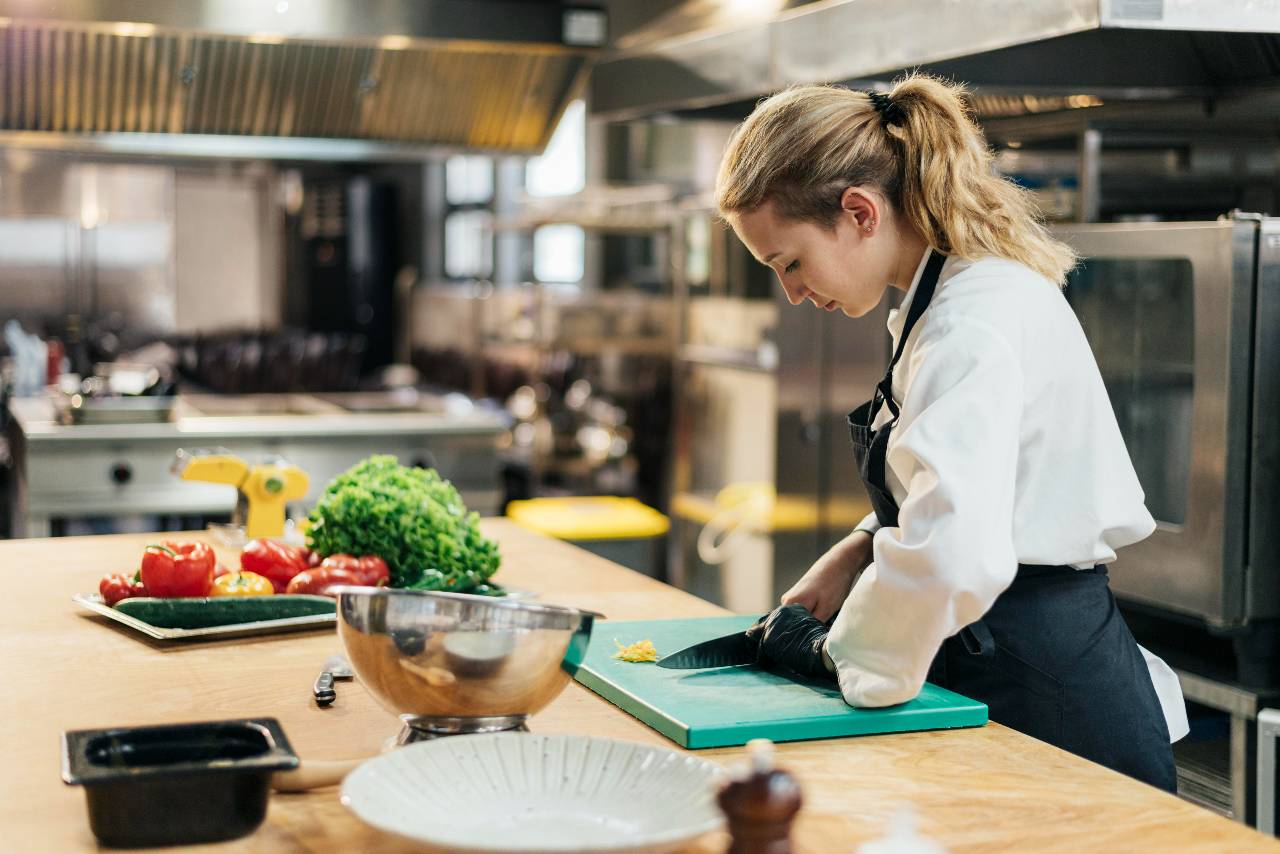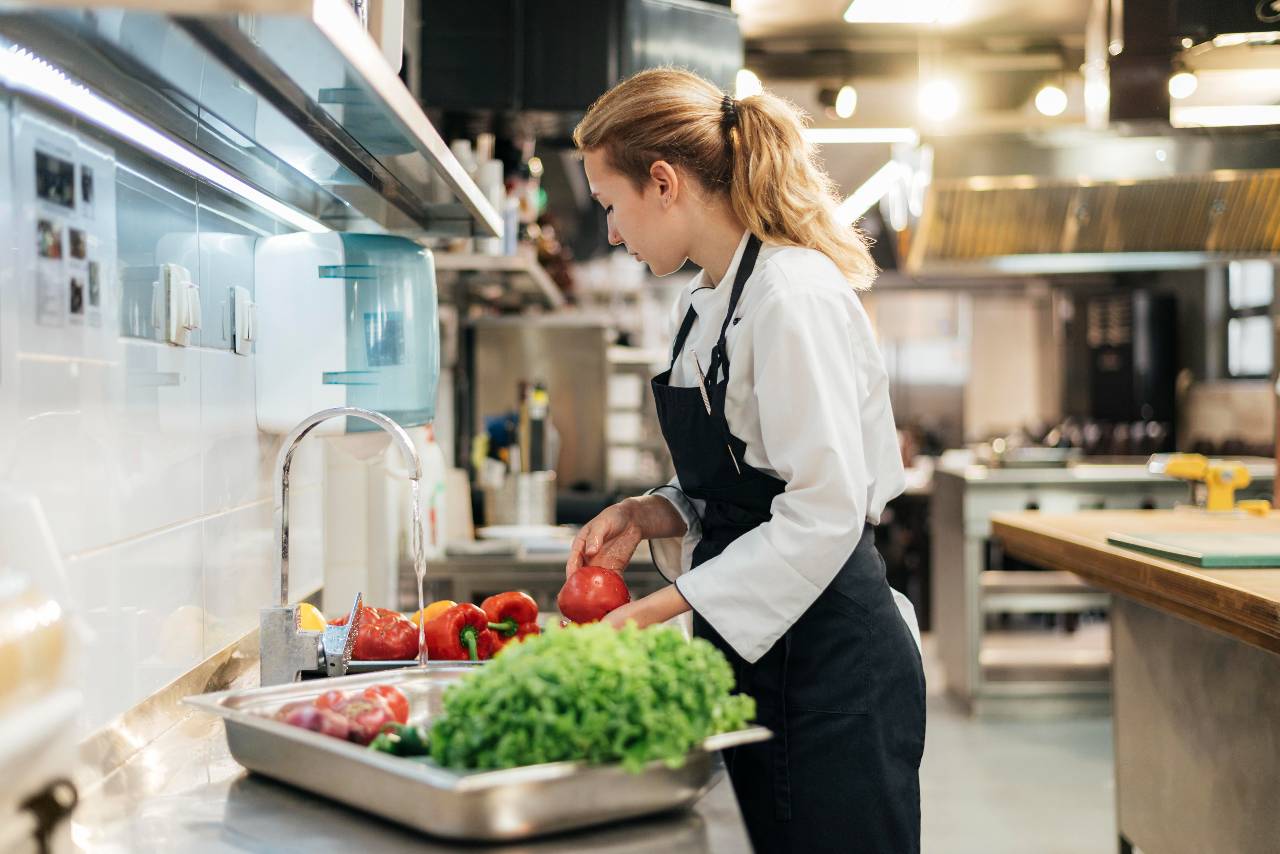7 Simple Ways to Prevent Cross-Contamination in Your Kitchen
Learn simple, low-cost ways to prevent cross-contamination in your restaurant kitchen and build a strong daily culture of food safety.

Overview
Even the cleanest kitchens can face cross-contamination risks - especially during peak hours when speed takes priority over precision. Cross-contamination occurs when harmful bacteria from raw foods, dirty tools, or unwashed hands spread to cooked or ready-to-eat items. It's one of the leading causes of foodborne illness in restaurants, responsible for nearly half of reported outbreaks according to the CDC.
The challenge for restaurant owners isn't a lack of care - it's time and structure. Staff are often juggling multiple prep tasks, handling orders, and managing rushes, leaving little room for complex procedures. That's why prevention has to be simple, quick, and built into daily routines.
By making small, consistent changes - like color-coded tools, labeled storage, and regular glove changes - you can build a safer workspace, protect your guests, and pass every inspection with confidence.

Use Separate Cutting Boards and Utensils
One of the simplest and most effective ways to prevent cross-contamination is by separating your cutting boards, knives, and utensils for different types of food. Raw meat, poultry, seafood, and vegetables all carry unique bacteria, and when tools are shared between them, those bacteria can easily transfer. Using separate, color-coded boards and utensils creates a clear, visual system that minimizes mistakes - especially during busy hours when staff are moving fast.
For example, many kitchens use red for raw meat, green for produce, yellow for poultry, blue for seafood, and white for dairy or baked goods. This color system helps cooks quickly identify the right surface without hesitation. It also eliminates confusion for new hires or rotating staff members, making food safety a natural part of daily workflow.
It's equally important to ensure that these tools are cleaned, sanitized, and air-dried between uses. Even if a knife or board looks clean, bacteria can survive on microscopic cracks or scratches. Replace cutting boards that are heavily worn or have deep grooves - these areas can trap moisture and create perfect breeding grounds for bacteria.
Encourage your staff to build a routine around this habit. Label the boards clearly, store them vertically in designated slots, and assign one person each shift to verify they're being used correctly. These small, inexpensive steps don't just prevent cross-contamination - they build a mindset of accountability and professionalism in your kitchen.
Label and Store Food Properly
Preventing cross-contamination doesn't stop at the prep table - it continues into your storage areas. Poor labeling or careless stacking can easily allow raw juices or spoiled ingredients to contaminate ready-to-eat foods. By setting clear, consistent rules, you can keep your inventory safe and easy to manage. Here are five key steps every restaurant owner should follow -
1. Label Everything Clearly
Every item should be labeled with its name, preparation date, and expiration date. Use waterproof labels and bold, legible writing. Avoid handwritten scraps or temporary tags - they fade and cause confusion. The rule is simple-If it's not labeled, don't use it.
2. Store in Proper Order
Follow a top-down rule -
- Top shelves - Ready-to-eat and cooked foods
- Middle shelves - Dairy, produce, and prepared sauces
- Bottom shelves - Raw meats, poultry, and seafood
Keeping raw items at the bottom prevents drips from contaminating other foods.
3. Use Sealed, Leak-Proof Containers
Store all proteins and liquids in sealed containers to prevent leaks. This also helps control odors and maintains freshness.
4. Control Temperatures Consistently
Keep refrigerators below 40F (4C) and freezers at 0F (-18C) or colder. Use thermometers or digital sensors to verify and record temperatures at least twice daily.
5. Clean and Rotate Regularly
Wipe shelves weekly, discard expired products, and practice FIFO (First In, First Out) rotation. This minimizes waste and reduces the chance of serving spoiled or unsafe food.
By numbering and standardizing your labeling and storage habits, your team will build a stronger safety culture - and your kitchen will run cleaner, faster, and more confidently.
Wash Hands and Change Gloves Frequently
Clean hands are the foundation of food safety, yet they're often the first line of defense that gets overlooked in a busy kitchen. According to the FDA, improper hand hygiene is a contributing factor in nearly 90% of food-borne illness outbreaks. For restaurant owners, enforcing strong hand-washing and glove-changing habits is one of the simplest and least expensive ways to prevent cross-contamination.
1. Hand-washing should happen before food prep, after handling raw ingredients, after touching garbage or cleaning supplies, and whenever staff switch between tasks. The process should take at least 20 seconds using warm water and antibacterial soap. Staff should scrub palms, fingers, under nails, and wrists thoroughly, then dry hands with a clean paper towel or air dryer. Placing visual reminders at hand-washing stations helps reinforce the habit and makes it easier for managers to monitor compliance.
2. Gloves, while useful, are not a substitute for clean hands. They must be changed frequently - after touching raw meat, handling cash, or switching from one food type to another. Wearing the same gloves for multiple tasks simply transfers bacteria from one surface to the next. Provide staff with easy access to glove stations, and use different sizes to ensure a comfortable fit that encourages proper use.
Finally, make it easy for employees to follow these practices. Keep sinks stocked with soap, paper towels, and sanitizer at all times, and schedule quick hygiene checks before service. When hand-washing and glove changes become second nature, your kitchen runs safer, smoother, and more professionally.

Sanitize Surfaces and Tools Regularly
Sanitizing your kitchen surfaces and tools is one of the most effective ways to prevent cross-contamination. Even after visible food debris is removed, bacteria can survive on counter-tops, knives, and utensils for hours. To keep your kitchen safe, follow these five essential steps for proper cleaning and sanitizing.
1. Establish a Cleaning Schedule
Create a clear routine for when and how cleaning happens. All prep surfaces, cutting boards, and utensils should be cleaned -
- Before opening
- Between tasks (especially after handling raw proteins)
- At closing
This schedule ensures that bacteria are never given the chance to multiply between uses.
2. Clean Before You Sanitize
Sanitizers work best on clean surfaces. Always wash equipment with warm, soapy water first, rinse thoroughly, and then apply a food-safe sanitizer. Skipping the cleaning step reduces sanitizer effectiveness and leaves behind hidden bacteria.
3. Use Approved Food-Safe Sanitizers
Stick to approved chemicals such as chlorine solutions or quaternary ammonium compounds (quats). Follow the manufacturer's dilution instructions and use test strips to confirm the right concentration. Too weak won't kill bacteria; too strong can contaminate food.
4. Target Hidden Contamination Points
Remember that handles, fridge doors, touchscreens, and prep equipment buttons collect germs during rush hours. Include these "high-touch" areas in every cleaning checklist.
5. Let Tools and Surfaces Air-Dry
Avoid towel drying, which can reintroduce bacteria. Allow sanitized equipment to air-dry on clean racks.
By numbering your cleaning process and turning it into a daily habit, you build accountability and consistency - keeping your kitchen safer, cleaner, and inspection-ready at all times.
Separate Equipment and Tasks During Prep
Cross-contamination often happens not because of poor cleaning, but because of task overlap - when the same table, knife, or container is used for different foods within the same prep cycle. The best way to stop bacteria from spreading is to clearly separate both equipment and workflow during food preparation. This helps your team stay organized and prevents unsafe shortcuts during busy shifts.
1. Start by assigning specific stations or tools for each food type. For example, one table for produce, another for proteins, and a separate area for baking or cold prep. If your kitchen is small, use time-based separation instead - prep vegetables first, clean and sanitize, then move on to raw meats or seafood. This "prep in sequence" method greatly reduces contamination risk even when space is tight.
2. Next, label and color-code equipment to match each task. Use different knives, cutting boards, and containers for meats, seafood, and vegetables. Consistent color systems (like red for meat and green for produce) eliminate confusion for new staff and make it easy for managers to confirm compliance at a glance.
3. Don't overlook shared tools and smallwares. Items like tongs, measuring cups, and thermometers should also be washed and sanitized between tasks. If they're reused without cleaning, bacteria can easily spread to multiple dishes before anyone notices.
Finally, train your staff to communicate clearly during prep. Simple phrases like "switching tasks - cleaning station" or "need new utensils" can keep the entire team aware and coordinated. When prep areas are structured and responsibilities are defined, your kitchen becomes more efficient, safer, and easier to manage.
Maintain Personal Hygiene and Uniform Cleanliness
Even with the best sanitation systems in place, food safety can still break down if personal hygiene is ignored. Every kitchen worker - from prep cooks to dishwashers - plays a role in preventing cross-contamination. Germs spread easily through unwashed hands, dirty uniforms, and careless personal habits, making hygiene one of the most important and affordable defenses in a restaurant.
Start with daily cleanliness standards. All employees should arrive in freshly washed uniforms or aprons, with hair tied back and covered by a hat or hairnet. Fingernails should be trimmed short, and jewelry such as rings, watches, and bracelets should be removed before shifts. These small actions help prevent bacteria from transferring to food surfaces unnoticed.
Next, emphasize hand hygiene throughout the shift. Staff should wash hands after touching their face, handling raw ingredients, emptying trash, or using their phones. Providing visible reminders near sinks and prep areas reinforces these habits. Managers can make a big impact by modeling the behavior themselves - when leaders wash and change gloves regularly, the team follows.
Uniform cleanliness also extends to laundry and storage practices. Keep clean uniforms separate from dirty ones, and avoid taking used aprons into dining or storage areas. Provide hooks or lockers for personal belongings so that work clothes don't come in contact with outside contaminants.
Finally, include hygiene checks as part of your opening and pre-shift routines. A quick once-over - clean hands, clean uniform, covered hair - takes seconds but protects every meal served. When cleanliness becomes part of your culture, your kitchen not only stays compliant but earns trust from customers and health inspectors alike.
Build a Culture of Food Safety
Preventing cross-contamination isn't just about checklists - it's about building a kitchen culture where every team member values food safety as much as speed or presentation. The most successful kitchens make cleanliness and hygiene a shared responsibility, not just a management rule. When staff understand why these practices matter, compliance becomes automatic and consistent.
Start by making food safety part of your daily communication. Begin each shift with a one-minute reminder - something as simple as "Don't mix boards today" or "Check sanitizer buckets." These quick refreshers keep safety top of mind without adding pressure. Use visual cues like posters, color charts, and temperature logs to reinforce habits.
Next, train with purpose. Instead of long lectures, break training into short, hands-on lessons - like demonstrating proper glove changes or how to store raw meats correctly. Encourage staff to ask questions or point out risks they notice during prep. This not only builds awareness but also empowers employees to take ownership of safety.
Managers should also lead by example. A chef who washes hands before switching tasks or a supervisor who double-checks labeling sends a stronger message than any sign on the wall. Praise staff when they follow correct procedures - it reinforces that food safety isn't just expected, it's respected.
Finally, track and reward consistency. Conduct brief weekly audits or "clean checks" and celebrate 100% compliance with small rewards or recognition. Over time, this builds pride in doing things right. When food safety becomes part of your restaurant's identity, preventing cross-contamination stops feeling like a chore - and becomes a natural part of how your team operates every day.